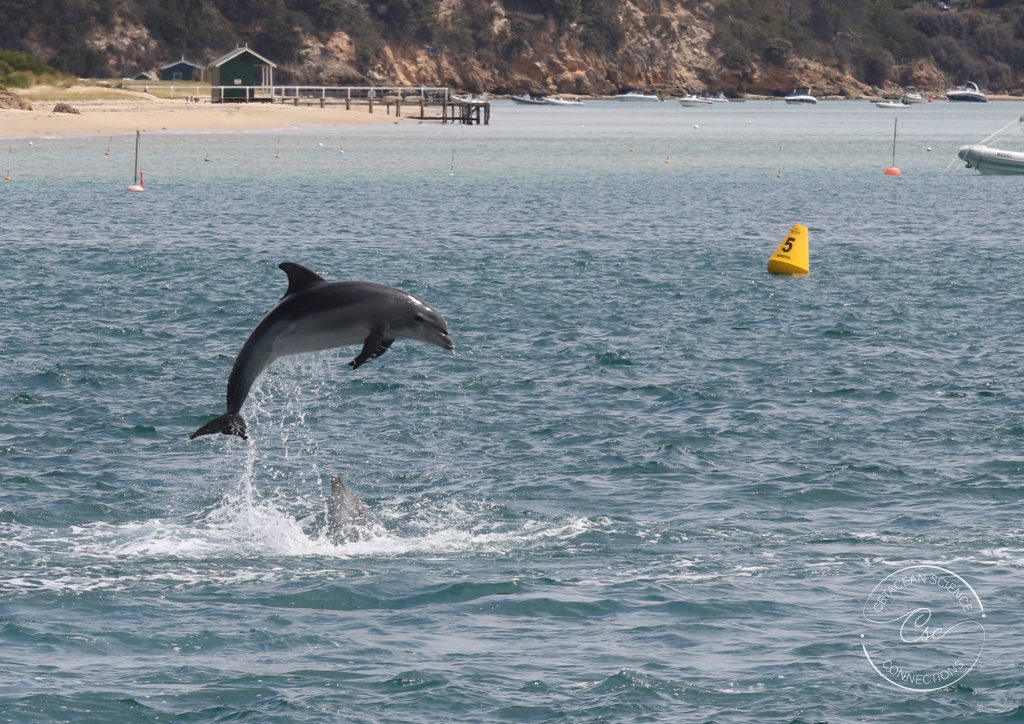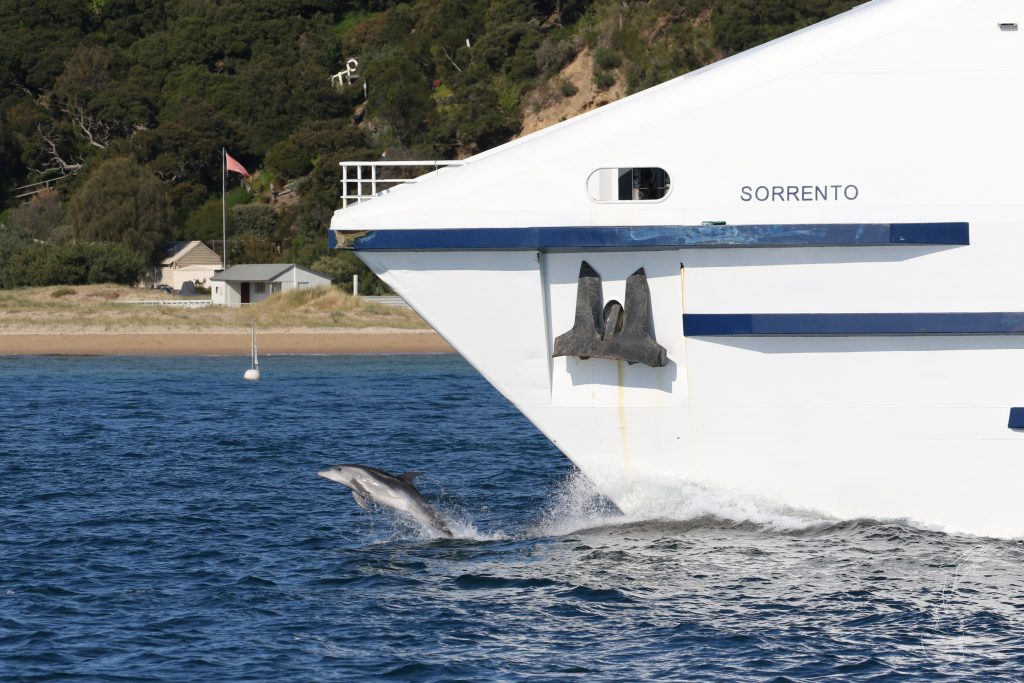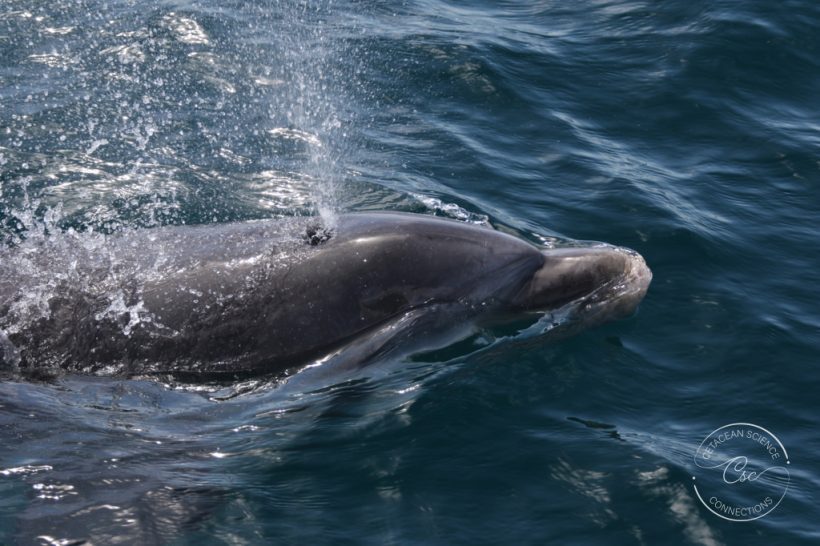Bottlenose dolphins (Tursiops sp.)

Identifying features
> Falcate (curved) grey-coloured dorsal fin
> Stubby rostrum (beak)
> Grey with a lighter coloured ventral surface (belly)
Body length
The size of bottlenose dolphins will varies depending on ecotypes:
> Inshore – maximum 2.7 m
> Offshore – maximum 3.8 m

Ecology
> Resident bottlenose dolphins occur in Port Phillip and the Gippsland Lakes
> The same species of bottlenose dolphins can be found along the southern Australian coast from Victoria/Tasmania to southern Western Australia (Pratt et. al. 2018)
> Individual dolphins can be identified by the nicks and notches that accumulate on the trailing edge of an individual’s dorsal fin
> Bottlenose dolphins can exhibit seasonal movement within a local marine system

How can you help with bottlenose dolphin science?
Share your dolphin photos, taken on any Victorian permitted whale or dolphins trip, by using the #finIDatsea. We’ll find it on socials, and if it’s a great fin identification image, we’ll contact you, ask for a high res version, and add it to our growing online AI-based catalogue…. your image will be watermarked and credited to you of course.
Can I join a tour to see bottlenose dolphins?

Port Phillip is home to four Victorian Government permitted swim-with-the-dolphin tour operators. These tours generally operate from October to April in southern Port Phillip. Moonraker dolphin swims, Polperro dolphin swims, and Watermaarq all depart from Sorrento jetty while Sea All dolphin swims departs from Queenscliff harbour. These tours are a fantastic way to see local Port Phillips sites such as Chinamans Hat and Quarantine Stations as well as the local wildlife that can include bottlenose dolphins, Australian fur seals, Australian gannets and weedy sea dragons.
Bottlenose dolphins can often be seen riding the bow or the wake of the SeaRoad Ferries so keep your eyes peeled if you are crossing the bay on the ferry.
Further details
Some bottlenose dolphins that occur along the Victorian coast have been described as a new species (Burrunan dolphin: Tursiops australis) (Charlton-Robb et al. 2011). The species is listed under the Victorian Flora and Fauna Guarantee Act, however, the validity of this species remains under debate. At this point in time, the species has not yet been fully recognized by the wider scientific community including the Committee on Taxonomy of the Society for Marine Mammalogy. The Taxonomy Committee advises both the International Whaling Committee (IWC) and the International Union for the Conservation of Nature (IUCN).
Charlton-Robb, K., Gershwin, L.-A., Thompson, R., Austin, J., Owen, K. and McKechnie, S. (2011). “A new dolphin species, the Burrunan dolphin Tursiops australis sp. nov., endemic to southern Australian coastal waters.” PloS one 6(9): e24047.DOI: 10.1371/journal.pone.0024047.
Pratt, E. A., Beheregaray, L. B., Bilgmann, K., Zanardo, N., Diaz-Aguirre, F. and Möller, L. M. (2018). “Hierarchical metapopulation structure in a highly mobile marine predator: the southern Australian coastal bottlenose dolphin (Tursiops cf. australis).” Conservation genetics: 1-18.

